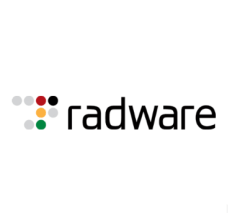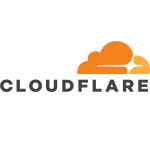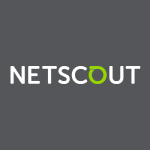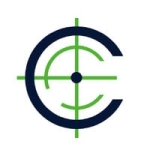It helps us a lot in terms of attacks, volumetric attacks, DDoS attacks, etc. It is very useful in that it also anticipates potential attackers. In addition, it helps us to automate, so we do not always have to be aware of alerts. It automatically blocks the types of attacks that occur on a daily basis.
It gives us peace of mind with its automation because DefensePro already has attacks in its knowledge base. It stops attacks and anticipates other attacks.
DefensePro is very important because the availability of our services is crucial. With the prevalence of denial-of-service attacks, volumetric attacks, it's vital for us to count on DefensePro to prevent them. It ensures we have a robust response to the many threats and attacks that arise on a daily basis. We have the availability of services that our clients need when they need them. That is the greatest benefit for us.
Since we started using DefensePro, we have not had problems with the availability of our service. It has helped mitigate the attacks that have been attempted. So far, we have not had an incident associated with denial of service issues.
Also, in the investigations we have done into verifying reports, we have seen that they are generally real denial-of-service attacks. The false-positive rate is not high. It has reduced false positives by more than 90 percent.
We realized these benefits almost immediately. As soon as we installed DefensePro, it began to deflect all the attacks that were occurring. We started seeing alerts, especially for DDoS attacks.
The platform for administration and review of attacks that are occurring or have occurred is very dynamic and easy to use and administer.
As a service provider, we use the SecOps dashboard feature. That's where we check the time of attacks to see if an attack is happening at the moment or if it has already happened, and we gather information such as how long the attack took. It is very dynamic and helps us know when an attack occurred, how long it lasted, and what type of attack it was. With this functionality, we have the information we need at hand. We know what is happening in real time and what has happened during the day. We review the dashboard for control issues, and we generate and maintain controls with antivirus attack themes.
For monitoring and reporting metrics, the dashboards are very useful. We generate controls for DDoS attacks monthly, and it makes that very easy. In addition, it helps us understand what happened. It's so easy to see what is happening, both in real time and at the time the reports or alerts are generated.
In our organization, the SecOps dashboards are managed by technical staff only. Other people in the company do not have access to it. But if they were shown to a person who is more administrative or managerial, they would understand them because they are easy to understand. I have shown certain screenshots to senior staff, and they were easily able to comprehend them. With this tool, you can express yourself in front of a person who is not involved in IT.
Its ability to detect attacks in real time is very effective. It features comprehensive automation because the signatures update themselves automatically. Plus, it can detect Zero-day attacks and possible attacks that are not yet known. That has also been of great value to us.
Right now, we have DefensePro 6. The only complaint I have is that SSL inspection, when activated, consumes a lot of resources on the machine. We are currently reviewing a possible change to DefensePro X, the new version, which has a separate module with its processors. It only consumes the performance of that card, not the rest of the machine. But SSL inspection resource consumption in DefensePro is the only thing I would say can be improved in our current version.
The initial deployment of Radware's solution was simple. Radware typically sends its team to assist with the setup. Our implementation strategy involved a day for configuration, another for installation, and a third day dedicated to monitoring the solution. This three-day strategy is our go-to when implementing any Radware platform. It took us three days to get everything up and running.
As for staffing during the deployment, one person from Radware was present, along with two members of our IT team.
There is no maintenance required from us.
To someone who wants to go with the cheapest solution, I would say that "cheap" often ends up being expensive. With Radware, we have the support of a company that specializes in these issues and provides efficient implementation and support. My advice would be to not hesitate to pick a company or a product that has excellent capabilities, like Radware, and has automatic threat detection and mitigation.
You have the full support of Radware for everything related to implementation and support. They are always very attentive to their clients and to all the updates. They have great support. Don't think it over so much; just get it.
DefensePro is a very dynamic platform, very easy to manage, and very intuitive. It has always kept our services up, mitigating all the denial-of-service attacks we've had. We have not had any incidents. It is an excellent product.
Foreign Language:(Spanish)
¿Cómo ha ayudado a mi organización?
Nos ayuda mucho en cuanto a ataques, ataques volumétricos, ataques DDoS, etc. Es muy útil porque también se anticipa a posibles atacantes. Además, nos ayuda a automatizar, por lo que no siempre tenemos que estar pendientes de las alertas. Bloquea automáticamente los tipos de ataques que ocurren a diario.
Nos da tranquilidad con su automatización porque DefensePro ya tiene ataques en su base de conocimiento. Detiene los ataques y anticipa otros ataques.
DefensePro es muy importante porque la disponibilidad de nuestros servicios es crucial. Con la prevalencia de los ataques de denegación de servicio y los ataques volumétricos, es vital para nosotros contar con DefensePro para prevenirlos. Garantiza que tengamos una respuesta sólida a las numerosas amenazas y ataques que surgen a diario. Tenemos la disponibilidad de los servicios que nuestros clientes necesitan cuando los necesitan. Ese es el mayor beneficio para nosotros.
Desde que empezamos a utilizar DefensePro, no hemos tenido problemas con la disponibilidad de nuestro servicio. Ha ayudado a mitigar los ataques futuros. Hasta el momento, no hemos tenido ningún incidente asociado con problemas de denegación de servicio.
Además, en las investigaciones que hemos realizado para verificar informes, hemos visto que generalmente se trata de ataques reales de denegación de servicio. La tasa de falsos positivos no es alta. Ha reducido los falsos positivos en más del 90 por ciento.
Nos dimos cuenta de estos beneficios casi de inmediato. Tan pronto como instalamos DefensePro, comenzó a desviar todos los ataques que se producían. Empezamos a ver alertas, especialmente de ataques DDoS.
¿Qué es lo más valioso?
La plataforma de administración y revisión de ataques que están ocurriendo o han ocurrido es muy dinámica y fácil de usar y administrar.
Como proveedor de servicios, utilizamos la función de los dashboards de SecOps. Ahí es donde verificamos la hora de los ataques para ver si se está produciendo un ataque en ese momento o si ya ocurrió, y recopilamos información como cuánto tiempo duró el ataque. Es muy dinámico y nos ayuda a saber cuándo ocurrió un ataque, cuánto duró y qué tipo de ataque fue. Con esta funcionalidad tenemos a mano la información que necesitamos. Sabemos lo que está pasando en tiempo real y lo que ha pasado durante el día. Revisamos el dashboard para detectar problemas de control y generamos y mantenemos controles con temas de ataque antivirus.
Para monitorear y reportar métricas, los dashboards son muy útiles. Generamos controles para ataques DDoS mensualmente y eso lo hace muy fácil. Además, nos ayuda a entender lo que pasó. Es muy fácil ver lo que está pasando, tanto en tiempo real como en el momento en que se generan los informes o alertas.
En nuestra organización, los paneles de SecOps son administrados únicamente por personal técnico. Otras personas de la empresa no tienen acceso a él. Pero si se los mostraran a una persona más administrativa o directiva, los entendería porque son fáciles de entender. Le mostré ciertas capturas de pantalla al personal superior y pudieron comprenderlas fácilmente. Con esta herramienta podrás expresarte frente a una persona que no esté involucrada en TI.
Su capacidad para detectar ataques en tiempo real es muy efectiva. Cuenta con una automatización integral porque las firmas se actualizan automáticamente. Además, puede detectar ataques de día cero y posibles ataques que aún no se conocen. Eso también ha sido de gran valor para nosotros.
¿Qué necesita mejorar?
En este momento tenemos DefensePro 6. La única queja que tengo es que la inspección SSL, cuando se activa, consume muchos recursos del equipo. Actualmente estamos revisando un posible cambio en DefensePro X, la nueva versión, que tiene un módulo separado con sus procesadores. Sólo consume el rendimiento de esa tarjeta, no el del resto del equipo. Pero el consumo de recursos de inspección SSL en DefensePro es lo único que diría que se puede mejorar en nuestra versión actual.
¿Durante cuánto tiempo he usado la solución?
Llevo seis años usando Radware DefensePro.
¿Qué pienso sobre la estabilidad de la solución?
Es muy estable. No hemos tenido ningún tipo de inconveniente o anomalía. Siempre arriba, sin problemas de hardware. En todo este tiempo ha estado activo y no hemos tenido ningún problema.
¿Qué pienso sobre la escalabilidad de la solución?
La escalabilidad es muy buena. Siempre podemos agregar otro equipo en nuestro otro centro de datos. Planeamos renovar DefensePro y aumentar nuestro uso para resolver el tráfico SSL.
¿Cómo es el servicio y soporte al cliente?
Su soporte técnico es excelente. Radware siempre responde con lo necesario.
¿Cómo calificaría el servicio y soporte al cliente?
Positivo
¿Qué solución utilicé anteriormente y por qué cambié?
Comenzamos nuestra protección DDoS con DefensePro.
¿Cómo fue la configuración inicial?
La implementación inicial de la solución de Radware fue sencilla. Radware normalmente envía a su equipo para ayudar con la configuración. Nuestra estrategia de implementación implicó un día de configuración, otro de instalación y un tercer día dedicado al seguimiento de la solución. Esta estrategia de tres días es nuestra opción al implementar cualquier plataforma Radware. Nos llevó tres días ponerlo todo en funcionamiento.
En cuanto a la dotación de personal durante la implementación, estuvo presente una persona de Radware, junto con dos miembros de nuestro equipo de TI.
No hay mantenimiento requerido de nosotros.
¿Cuál fue nuestro retorno de la inversión?
El retorno de la inversión para nosotros es saber que nuestros servicios están disponibles. Eso significa que no sufrimos pérdidas financieras ni pérdidas en nuestra reputación. Esos son grandes beneficios.
¿Cuál es mi experiencia con los precios, el costo de instalación y las licencias?
Generalmente firmamos contratos de tres años, lo que nos genera buenos descuentos.
¿Qué otro consejo tengo?
A alguien que quiera optar por la solución más barata, le diría que lo "barato" a menudo acaba saliendo caro. Con Radware contamos con el respaldo de una empresa que se especializa en estos temas y brinda implementación y soporte eficiente. Mi consejo sería no dudar en elegir una empresa o un producto que tenga capacidades excelentes, como Radware, y que tenga detección y mitigación automática de amenazas.
Cuentas con el soporte total de Radware para todo lo relacionado con implementación y soporte. Siempre están muy atentos a sus clientes y a todas las actualizaciones. Tienen un gran soporte técnico. No lo pienses tanto y elige Radware.
DefensePro es una plataforma muy dinámica, muy fácil de gestionar y muy intuitiva. Siempre ha mantenido nuestros servicios en funcionamiento, mitigando todos los ataques de denegación de servicio que hemos tenido. No hemos tenido ningún incidente. Es un excelente producto.





















Amazing